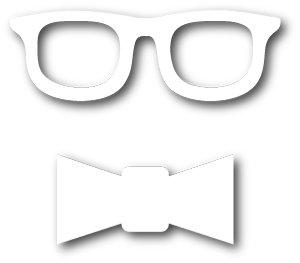Chuck, in my humble opinion, is a great example of how to use pop and pre-composed music very well in a television series (not to mention being a fun show). Created by many of the same people who did The O.C., the show carries on the same geek chic that was a part of that series, but extends the pop culture references into the aural sphere. The last two episodes (‘Chuck vs. Santa Claus’ and ‘Chuck vs. the Third Dimension’) are great examples of how they do it.
Some basic plot is in order. The series is a spy-spoof/fish out of water in which the title character, Chuck, is thrown into the international spy world when all of the U.S. government’s secrets are downloaded into his head. He will occasionally ‘flash’ on a person or object, which leads him and his protectors (the stunning Sarah, who is also his cover girlfriend, and the hard-ass John, who poses as a co-worker) to run down the bad guys of the week. This is all juxtaposed against Chuck trying to maintain his normal life which involves living with his sister and her fiancee and working his job at the Buy More (a thinly veiled Best Buy) with his friends and co-workers.
The last episode prior to Christmas hiatus, ‘Chuck vs. Santa Claus’ is an extended homage to Die Hard. You have a hostage crisis at the Buy More, but, just as in Die Hard, the hostage taker’s real reasons are not those which he states to the police (one of whom is Reginald VelJohnson, reprising his Die Hard role of Sgt. Al Powell). The Die Hard musical homages are most striking in the scene when Chuck is locking down the Buy More and the music is similar to the analogous scene from the movie as the terrorists lock down Nakatomi Plaza (in fact, the previous episode deals with the sale of Nakamichi Plaza, itself a sideways reference to Die Hard). The cue, like much of Michael Kamen’s score, is based upon the Ode to Joy from Beethoven’s Ninth. An astute listener, at this point, will have put the pieces together and figured out what was coming. The reference comes out full at the end as Sgt. Al Powell and his cousin, store manager ‘Big’ Mike, run to embrace each other at the end, and we are treated to a clip from an actual performance of the Ode to Joy.
This week’s episode, ‘Chuck vs. the Third Dimension,’ has three major musical references: 80s rock anthem ‘The Final Countdown’ by Europe, ‘Sul Aria’ from Mozart’s Marriage of Figaro, and a coy musical allusion to John Williams’ March from Raiders of the Lost Ark. The first two are used during the episode’s back up story which involves a series of contest to determine who will accompany Morgan (a co-worker and friend of Chuck’s at the Buy More) to the back stage of a rock concert. Taking part in this competition is a new employee and friend of ‘Big’ Mike’s who has just been released from prison.
‘The Final Countdown’ accompanies the challenge scenes and obviously, thanks to the 80s synth driven sound, harkens back to the multiple montage and other scenes from sports films. The song has also enjoyed renewed interest in this decade thanks to its inclusion in the show Arrested Development as the intro music for a character who was a (terrible) magician (also of note is that an actor from Arrested Development is currently starring on Chuck).
After the competition is won, Morgan rethinks his decision and decides to give the ticket to the man who is just out of prison. In wonderfully overdone scenes involving him discussing how the ex-con should enjoy his new freedom, we hear Mozart’s duet from Marriage of Figaro, which was most famously used in The Shawshank Redemption, where it was played to the prisoners and we hear Morgan Freeman narrate: “I have no idea to this day what those two Italian ladies were singing about. Truth is, I don’t want to know. Some things are best left unsaid. I’d like to think they were singing about something so beautiful, it can’t be expressed in words, and makes your heart ache because of it. I tell you, those voices soared higher and farther than anybody in a gray place dares to dream. It was like some beautiful bird flapped into our drab little cage and made those walls dissolve away, and for the briefest of moments, every last man in Shawshank felt free.”
Finally, the end of the episode, as the team leaves for another mission, we hear the familiar chords and rhythms of the Raiders March, though it has been altered so that after the familiar opening it doesn’t exactly mimic the piece (probably due to copyright or costs or whatever). Just as at the end of the Indy films, he mounts up or leaves to go on his next adventure, so do our heroes. Chuck, after some trauma at the end of the previous episode, is back in a better head-space, and all is, mostly right with the world. And as the episode closes, we have a visual reference to Back to the Future, as the words ‘To Be Continued’ are shown on screen in the same font as from the closing of those films.
As I have hopefully shown, Chuckis a pop culture savvy show, whose numerous allusions, both visual and aural, help to enrich a viewer’s appreciation of the show, and the geek culture embodied by the title character.







I remember laughing hysterically near the beginning of ‘Chuck Vs. Santa Claus’ as soon as the opening played through and I heard a few strains of the ‘Ode to Joy’ in the extreme low register. Andrea asked what was so funny and I told her that we were about to enter into Die Hard territory.
I, too, enjoyed the little Raiders March-like motif at the end of ‘Chuck Vs. The Third Dimension’.